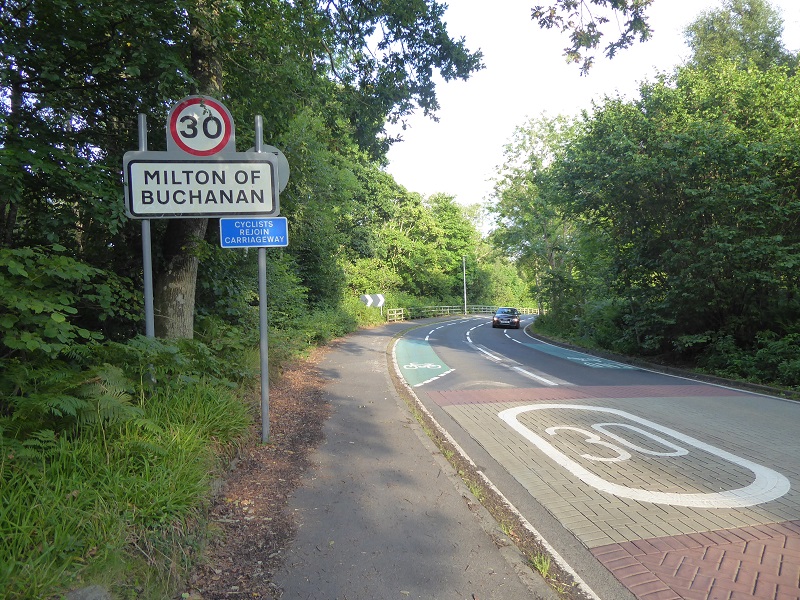
Most visitors to Balmaha and beyond this summer will have probably been struck by the new cycle lanes through Milton of Buchanan. I use a bike to get around Glasgow, campaign in the area I live for more cycle lanes and when driving try to be as “cycle friendly” as possible. Coming into Milton of Buchanan therefore I tried to avoid the cycle lane but the space left between the lane and the central line is far too narrow for a car.
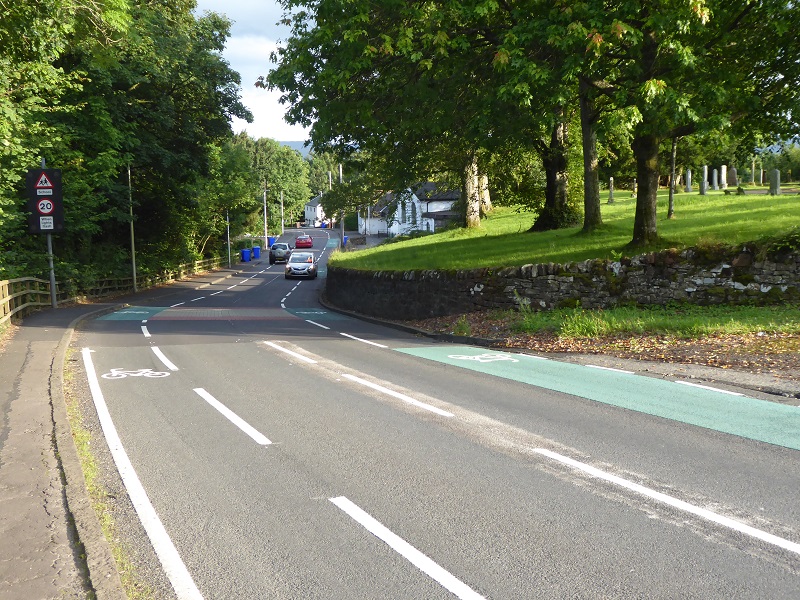
Then, just a little further on, the centre road marking disappears completely and the road narrows to one lane, far too narrow to allow two cars to pass. Any car determined to respect the cycle lanes risks would run into cars coming from the other direction head on. The consequence is every car I saw had either to swerve in and out of the cycle lanes or simply ignored the cycle lane completely. This is not the drivers’ fault, its the consequence of extremely poor design and provides ammunition to the petrol heads who believe all cycling provision is a denial of their right to drive their car wherever they want.
The local community and the local police force appear to share this view:
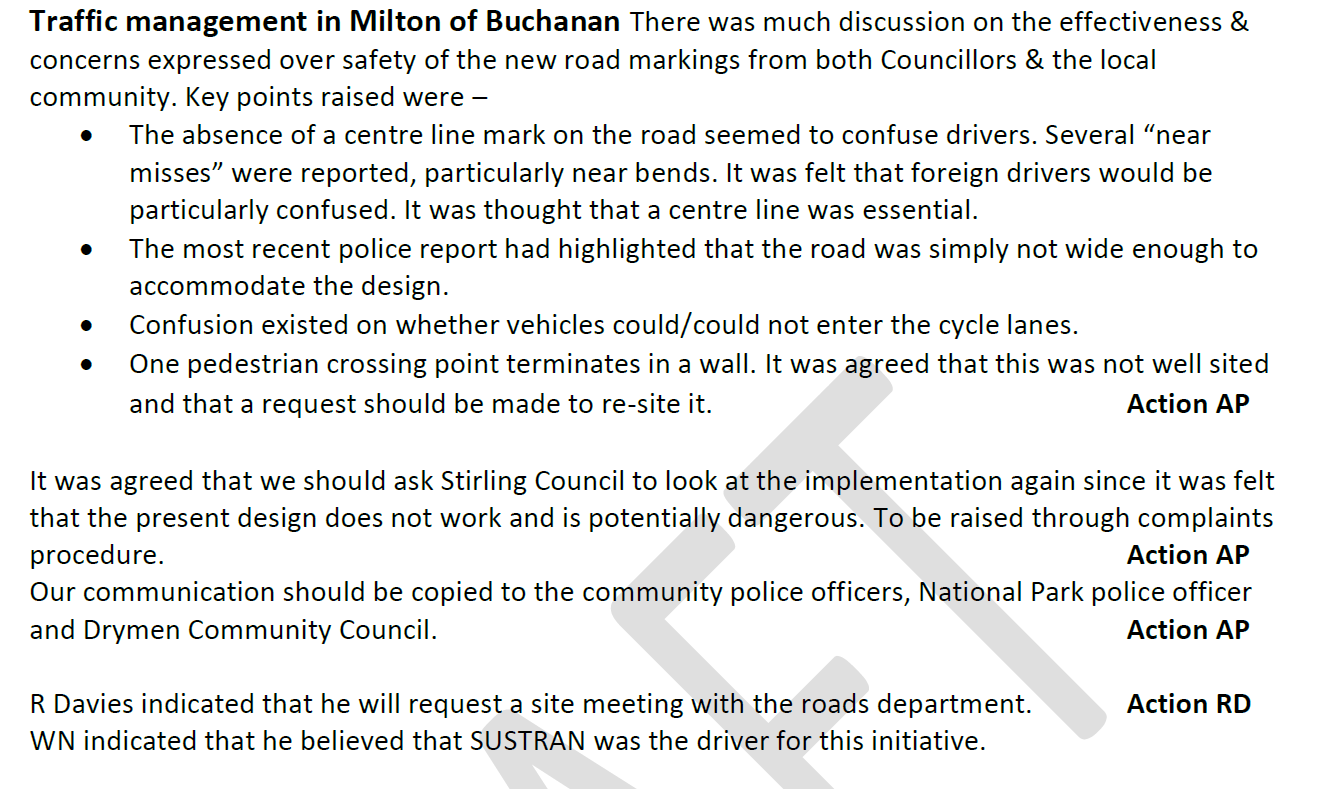
Now I have been aware from the organisational updates given to the Loch Lomond and Trossachs National Park Board meetings that there were plans to create a cycle path between Drymen and Balmaha. I have been unable to find any information about these plans on either the LLTNPA, the Stirling Council or Sustrans websites, but that may because I have searched in the wrong places. Its not clear what consultation has taken place but I suspect that if any meaningful consultation had taken place about Milton of Buchanan, the poor design would have been avoided. Consultation however tends to go by the wayside when people have limited budgets and performance targets to meet.
I happen to have walked along the entire B837 between Balmaha and Drymen – which is marked as a core path on the LLTNPA’s core path plan. While there is a pavement along most of the road, its very narrow in some places and in others disappears completely, sometimes on bends where this a verge less than a foot wide and where its hard for cars to see you. Not a good walking experience, even on the section between Milton and Buchanan and Balmaha which is marked on OS Maps as an official alternative to the main West Highland Way. So much for “destination Scotland”.

The plan for Sustrans to install a cycle path therefore appeared to me a good one in principle which could benefit both cyclists and walkers, both visitors and local residents, and improve current provision.
The challenge however is that the B837 is narrow and bordered by (attractive) hedges, not atypical for a country road. To accommodate cars, cyclists and walkers you either need to widen it, which would require significant investment including the costs of purchasing land bordering the road, or restrict cars. In effect, an attempt to restrict cars has been made at Milton of Buchanan but in a way that is extremely poorly designed and so both ineffective and dangerous. If there were far fewer cars, the road markings at Milton of Buchanan might just about be made to work (if priority was given to cars coming from one way). The only way to make this happen though would be to restrict traffic to Balmaha to local residents and commercial vehicles, introduce a frequent year round bus service for visitors along with new car parking capacity at Drymen. While this could fit with the proposal to close the road to Rowardennan (see here) I cannot see this happening in the near future. The proposed cycle path along the B837 and the section created at Milton of Buchanan therefore needs a re-think.
An alternative to the current road markings at Milton of Buchanan would be to create a segregated path shared by cyclists and pedestrians along one side of the road. In my view that would be better than the current set up. Its easier and safer for cyclists to share a lane with pedestrians than with cars and indeed the first photo in this post shows the assumption is that cyclists should use the pavement outside the village.
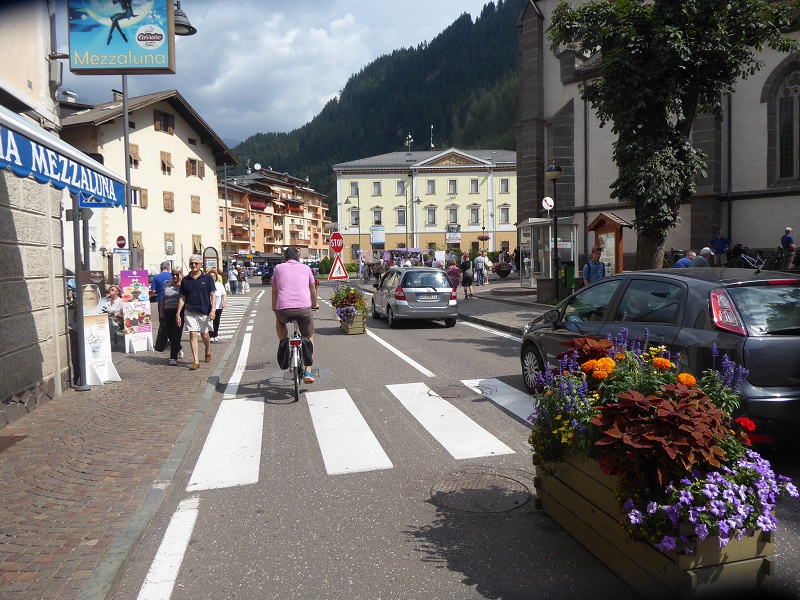
In the Dolomites I saw lots of evidence of how to do things differently, ideas we could apply to Scotland. In the Dolomites there appeared to be far more emphasis on segregated cycle routes, ranging from temporary arrangements to dedicated paths.
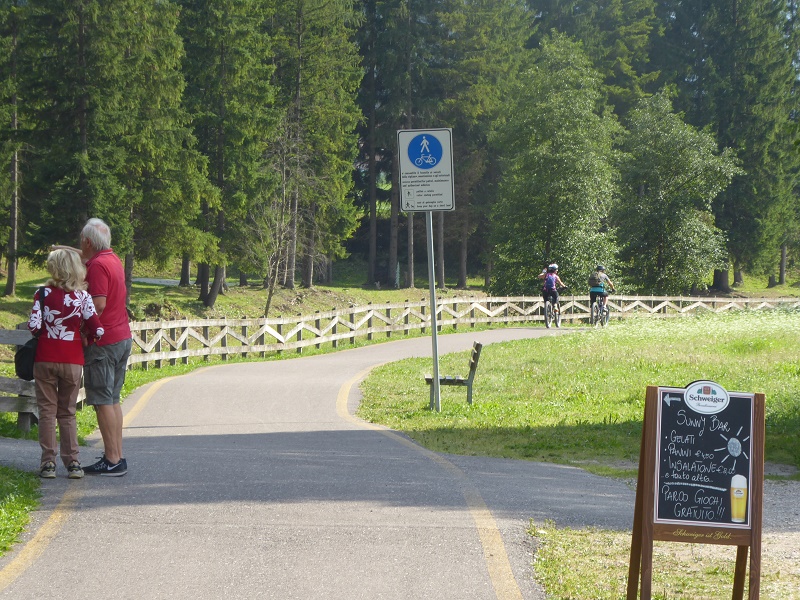
Great work of course has been done in Scotland on developing dedicated cycle routes through the National Cycle Route network but we appear to be well behind Italy.
It seems to me that if there is not space to create segregated cycle lanes and a decent path along the B837 consideration should be given to following the Italians and developing an alternative route. There is already an extensive and under-promoted path network between the B837 and the River Endrick, some of which have been designated as core paths (see here). The problem is it does not join up to create alternative through routes. It could do.
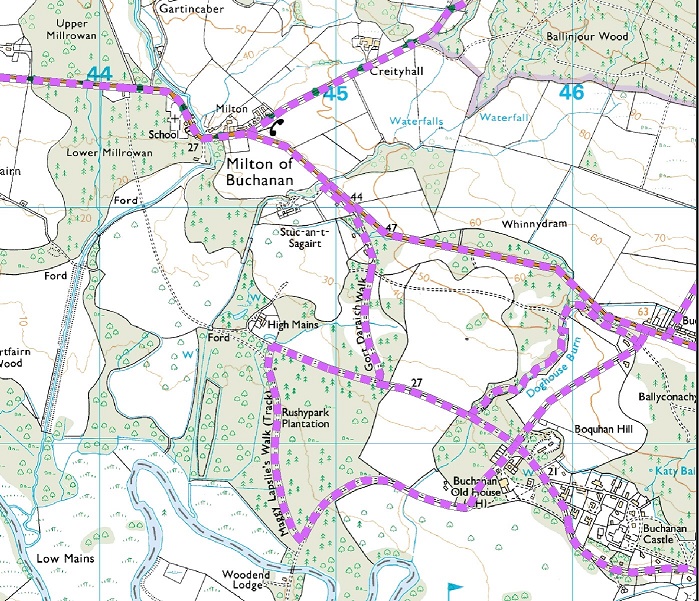
I am not here trying to provide a definitive answer to how we improve cycle path/lane provision in the National Park or even at Milton of Buchanan, only to illustrate that we need to think more creatively and thoroughly about how existing provision should be improved. In my view that process should be led by the National Park Authority. Unfortunately it appears that rather than co-ordinating new provision and ensuring there is consultation with appropriate bodies, from the local community to the Ramblers Associations and organisations like Go Bike, the LLTNPA are leaving this to others. That partly accounts I think for the daft road markings at Milton of Buchanan.
One of the priorities in the draft National Park Partnership plan, “Visitor Experience 1” is “Ensuring that the National Park Core Paths are reviewed and fit for purpose” while another, Visitor Experience 2 commits the LLTNPA to “Promoting the use and improvement of the National Walking and Cycling Network including new active travel linkages between communities as well as routes facilitating active travel into the Park and better linkages with existing transport hubs and routes.” The cycle lanes at Milton of Buchanan provide a graphic illustration of why this is needed. However, if the LLTNPA is to become an effective public authority which leads on developing good practice for outdoor recreation and active travel it will need to allocate resources to do this. In my view it could do so easily if its Board decided that instead of fruitlessly devoting most of its resources to chasing away campers it re-focussed on how it could provide the infrastructure necessary to support visitors.
